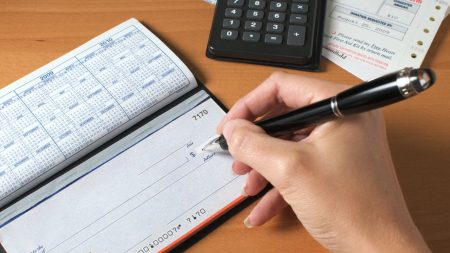Key takeaways
- Understanding CD strategies and terminology can help you evaluate how to make the most of this type of deposit account.
- Important concepts associated with CDs include APYs, term lengths, early withdrawal penalties and how rates compare with inflation.
- Choosing a federally insured bank or credit union for your CD ensures your money is protected, as long as it’s within the established limits.
If you’re looking for a low-risk investment, you might consider a certificate of deposit (CD). A CD is similar to a savings account, but there are also some key differences: Unlike savings accounts, CDs typically earn a fixed yield until they mature, and you usually need to keep your money in the CD for that entire time. Withdrawing the money before the CD matures often results in a penalty.
CDs are considered a safe investment if they’re issued by a federally insured bank or credit union, and also because their guaranteed rate allows you to determine up front exactly how much interest you’ll have earned by the time they mature.
1. CD basics and terminology
If you’re new to investing in CDs, it can help to familiarize yourself with the terminology associated with these accounts. Here’s a breakdown of the essential terms and concepts:
Annual percentage yield (APY)
The annual percentage yield (APY) is an important aspect to understand when it comes to CDs: It indicates how much money you’ll earn. Specifically, the APY refers to the compounded interest rate for one year. The higher the APY, the more money you’ll make.
Interest rates for CDs may compound daily, monthly or quarterly. Those that compound more frequently will produce higher earnings. When shopping around for the top CD rates, you’ll find that online-only banks commonly offer higher APYs than their brick-and-mortar counterparts.
Term length
A CD term is the length of time that your money will be left in the account, and it’ll grow there at the designated APY until the maturity date.
Banks typically offer many term options, often ranging between six months and five years, and it’s important to select the term that best fits your needs and goals.
“The first step is to determine the amount of time you are comfortable leaving your savings untouched,” says Mark Moroz, head of deposits and payments at Live Oak Bank.
Choose a CD term that aligns with when you’ll want access to the money for a planned purchase or to reinvest elsewhere. For instance, if you plan to put a down payment on a house in a couple of years, a two-year CD could be a good place to earn some interest in the meantime.
Minimum deposit requirements
Look for one that has a minimum deposit requirement with which you’re comfortable and that aligns with your savings goals. Some banks, such as Ally Bank and Synchrony Bank, don’t require any set minimum deposit, whereas others may require $500, $1,000 or more. Depending on the bank, you may be required to deposit between $0 and $10,000 or more.
Federal deposit insurance
CDs are federally insured when they’re offered from banks insured by the Federal Deposit Insurance Corp (FDIC). This means you won’t lose your money should the bank close its doors. “Read the fine print. You want to make sure you are putting your money in an FDIC-insured financial institution,” says Live Oak Bank’s Moroz.
CDs issued from credit unions are called “share certificates” and can be insured by the National Credit Union Share Insurance Fund (NCUSIF). At both banks and credit unions, federal deposit insurance limits are $250,000 per depositor, per insured institution, per ownership category.
Renewal options
When your CD matures, you typically have a grace period of around seven to 10 days during which you can withdraw your funds without paying a penalty or instruct the bank to renew the CD. If you do nothing during the grace period, the bank will likely renew the CD automatically at whatever rate it’s offering at that time.
Whether your CD has renewed automatically or not, you may at some point consider whether to withdraw the money from a CD before its term ends. Doing so usually results in an early withdrawal penalty that typically is a certain number of days’ or months’ worth of interest.
Fixed vs. variable rates
Most CDs have a fixed rate, meaning that the APY will not fluctuate at all during the entire CD term. This is helpful if rates start to decline, because a fixed rate CD won’t be affected by falling rates. Conversely, locking in a given APY can be a bad idea if you believe rates will increase soon. Fixed rates are a feature that sets CDs apart from savings accounts, which earn variable APYs, meaning the bank can choose to raise or lower them at any time.
2. Types of CDs available
Most CDs lock in a fixed rate for a set term, although various specialty CDs options provide more flexibility when it comes to raising your rate or withdrawing the money early.
Traditional fixed-rate CDs
Traditional CDs earn the same APY throughout the entire term, and they charge an early withdrawal penalty if you need access to the money before they mature. This type of CD can be a good idea if you lock in a highly competitive rate and there’s a good chance rates won’t increase further during the CD’s term.
No-penalty CDs
If you’re seeking the guaranteed rate of a CD, yet there’s a chance you may need to withdraw the money before the CD’s term ends, a no-penalty CD could be a good choice. Also known as liquid CDs, no-penalty CDs typically allow you to access the money before the term ends without incurring an early withdrawal penalty. No-penalty CD rates will likely be lower than the APYs offered on traditional CDs with similar terms.
“A no-penalty CD can be a good option for savers in times where the CD pays more than a money market,” says Juli Erhart-Graves, certified financial planner and president of Worley Erhart-Graves in Indianapolis. “This can allow you to store excess cash or cash that you aren’t sure you will need in a vehicle that pays a higher interest rate.”
Jumbo CDs
A jumbo CD is largely the same as a standard CD except that it has a higher minimum deposit requirement, usually $100,000 or more. Rates on jumbo CDs may be higher than the rates for standard CDs, although that’s not always the case.
“Jumbo CDs can be a good option as long as they fit into your overall financial situation,” says Erhart-Graves. “For example, if you have cash set aside for a future expense, parking it in a jumbo CD can give you extra interest. However, a jumbo CD may not be appropriate for your long-term retirement savings.”
Other specialty CDs
- Bump-up CDs: Also sometimes referred to as a raise-your-rate CD, a bump-up CD gives you an opportunity to increase the CD’s rate of return. If rates increase, you can ask the bank to increase your CD rate. Usually, you can only take advantage of one rate increase per term.
- Step-up CDs: Similar to bump-up CDs, step-up CDs give you a chance to take advantage of increasing rates. However, rather than the account holder requesting a rate increase, the bank will automatically raise the interest rate by a predetermined amount.
- Callable CDs: Callable CDs typically earn higher interest rates than standard CDs, but they come with an extra risk factor — the bank may cut short or “call” the CD before the term is up. This can happen if rates start dropping.
- Add-on CDs: Unlike other CD types, an add-on CD allows you to make one or more deposits after the initial deposit. That way, you can continually grow your savings as more money becomes available to you to invest.
3. Investing in multiple CDs
When it comes to investment strategies, sometimes investing in multiple CDs can open up more opportunities for getting higher rates, having more flexibility and diversifying your portfolio. Two common CD investment strategies are CD ladders and the barbell strategy.
A CD ladder involves opening several CDs at the same time with staggered term lengths. This way, some of the funds will be freed up soon for reinvesting or other purposes, while you’ll also be able to earn potentially competitive, guaranteed rates for longer periods of time.
For example, you might create a five-rung CD ladder by opening the following CDs:
- $1,000 in a one-year CD
- $1,000 in a two-year CD
- $1,000 in a three-year CD
- $1,000 in a four-year CD
- $1,000 in a five-year CD
When each CD matures, you can deposit the money into a new CD, invest the money elsewhere or use the funds for a planned purchase.
“A CD ladder can be used for cash flow planning,” says Erhart-Graves. “For example, if you have known cash needs over the next few years, you can invest the amounts needed in CDs that mature at different times, lining up the maturity with when you need the money. You can end up earning more interest relative to a money market account since you can tie up some of the money for longer periods.”
A barbell strategy is similar to laddering, but it forgoes the middle rungs. You’ll deposit half your money in short-term CDs and half in long-term ones. In addition to taking advantage of more total interest on the longer-term CDs, you can access the funds in the shorter-term CDs relatively soon and potentially keep up with rising rates.
For example, a barbell strategy might involve depositing $1,000 in CD with a one-year term and another $1,000 in CD with a five-year term.
4. How inflation affects CD returns
The Federal Reserve periodically makes changes to the federal funds rate in response to inflation levels, and banks commonly move their APYs in lockstep with this benchmark rate. When the Fed raised the rate 11 times in 2022 and 2023 to combat high inflation, many banks followed suit by raising their deposit account rates.
The Fed then lowered the rate by 100 basis points in 2024, and many CD APYs came down, in turn. However, top CD rates remain above the current rate of inflation, which means your money in a CD isn’t losing purchasing power at this time.
“Inflation and its result, elevated prices, continue to be major irritants for Americans. At the same time, individuals and households must continue to prioritize saving to achieve their financial goals. The good news, even with persistent inflation concerns, is that superior yields above the recent inflation rate can still be found and leveraged. The Fed is seen keeping its benchmark short-term rate at its current level for months to come. Long-term rates, such as the 10-year Treasury yield, remain elevated. All of that is consistent with a ‘higher for longer’ interest rate environment which can be productive for savers.”
— Mark Hamrick, Bankrate senior economic analyst.
5. When to choose a CD over a savings account
CDs are designed for specific types of savings goals and investment preferences. Some conditions under which a CD might be a better investment than a savings account include:
- You already have an emergency fund in a more liquid account. Having an emergency fund helps ensure you can pay for unplanned expenses such as a big medical bill or a car repair. It’s best to keep this money where it’s easily accessible, such as in a savings or money market account. Only after your emergency fund has been established should you consider opening a CD.
- You’re saving for a future purchase or expense. Since CDs come at set terms, they make for good investments for savings goals you want to achieve by a planned date. For example, you might want to open a one-year CD to save for a wedding or vacation in one year. CDs might not be a great investment for a longer- term goal, such as retirement.
- The CD rate is higher than the savings account rate. CDs can offer higher rates than savings accounts in exchange for your leaving the money untouched for the term. These days, however, some savings accounts are earning higher APYs than CDs, so it’s important to compare rates between the two when deciding if a particular CD is right for you.
- You can comfortably meet the minimum deposit requirement. Minimum deposit requirements for CDs can vary among banks, so it’s important to find one with which you’re comfortable. Many online banks these days don’t require any set minimum amount.
How to open a CD
To open a CD, you’ll first need to find the bank and CD that are right for you. Ideally, find a CD that’s outpacing inflation with a term length that’s suitable to your financial needs (i.e., a period of time you don’t expect you’ll need that money). Once you’ve done that, go to the bank or credit union’s website and open the account using an online application. You’ll need information about yourself, likely including your social security number and government-issued ID.
To open a CD, you’ll first need to decide upon a term length that fits your financial goals and timeline. From there, shop around for a federally insured bank or credit union that offers competitive yields. Once you’re ready to open the CD, you can do so at a branch (if one is available) or on the financial institution’s website.
Read the full article here










